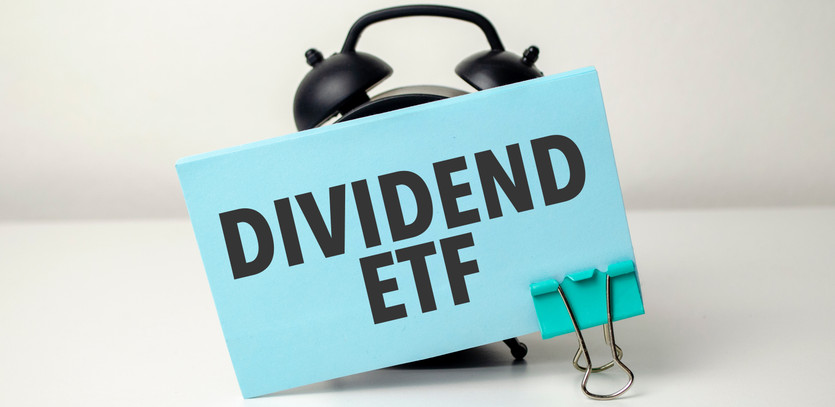Embarking on the journey to find the best dividend-paying ETFs? Your golden path starts here, where we help you navigate through a rich landscape of options that could potentially augment your portfolio with steady income streams through dividends. Dive deep into the attributes such as sterling yield, minimal expenses, and a carefully carved out investment strategy to align perfectly with your financial goals. In this comprehensive guide, we not only provide snapshots of some high-performing dividend ETFs but also weave in essential tips and strategies to steer you in the right direction.
Understanding ETFs Before Making Your Investment
Whether you're a seasoned investor or just starting out, understanding the intricate dynamics of ETFs is pivotal. These financial instruments offer a harmonious blend of the benefits of both stocks and mutual funds, promising a hybrid investment avenue that could potentially amplify your gains while mitigating risks.
- Trading Dynamics: Unlike mutual funds, which settle at day-end prices, ETFs allow investors to engage in intraday trades, providing the flexibility to capitalize on market trends as they unfold during the trading day.
- Ownership Structure: When you invest in an ETF, you essentially buy a piece of a well-diversified portfolio, sidestepping the risks associated with owning individual assets.
- Management Strategy: ETFs predominantly adhere to passive management strategies, mirroring the performance of benchmark indexes. This translates to low turnovers and reduced expenses compared to actively managed funds.
- Expense Ratios: The enchanting allure of ETFs extends to their low expense ratios, often outperforming even the most economical index mutual funds, leaving more of your money invested to work for you over time.
- Entry Barrier: ETFs abolish the minimum initial investment requirement seen in many mutual funds, allowing even those with limited capital to enter the investment landscape and build wealth gradually.
Tax Implications and the Ideal Accounts for Dividend ETFs
Understanding the tax dynamics surrounding dividend ETFs can potentially save you a considerable amount in taxes and help you build a more tax-efficient investment portfolio.
- Tax Dynamics: Though dividends may invite taxes, the lower turnover rate of ETFs generally results in lesser capital gains being passed on to the shareholders, providing a shield against hefty tax liabilities.
- Account Types: Strategize to house your dividend ETFs in tax-advantaged accounts such as traditional IRAs or Roth IRAs to optimize the tax efficiency of your investment narrative, nurturing your wealth without the nagging worry of heavy tax burdens.
Curating the Best Dividend ETFs
Selecting the best dividend ETFs necessitates a foray beyond mere high yields. It beckons an exploration into realms of growing dividends, stability, and aligning with robust investment objectives. Let's spotlight a few potential leaders in the dividend ETF domain, each with its unique features to cater to different investor preferences:
iShares Select Dividend Index (DVY)
- Index: By closely tracking an index of nearly 90 stalwarts that have demonstrated consistency in dividend payouts for over a decade, it offers a proven track record of reliability.
- Yield & Expense: Balancing a substantial SEC yield of 4.61% with a moderate expense ratio of 0.39%, it provides a promising avenue for potential gains with controlled expenses.
iShares Core High Dividend (HDV)
- Portfolio: This ETF reveals a curated spectrum of around 75 US dividend-paying stocks, screened rigorously for financial robustness to offer a stable investment option.
- Yield & Expense: Enjoy a compelling SEC yield of 4.67%, paired with a nominal expense ratio of 0.08%, promising substantial returns while keeping the expenses to a minimum.
Vanguard High Dividend Yield (VYM)
- Snapshot: A low expense ratio meets high yields in this fund tracking the FTSE High Dividend Yield Index.
- Details: Boasting a 3.77% SEC yield and a mere 0.06% expense ratio.
Vanguard Dividend Appreciation (VIG)
- Snapshot: Ideal for those eyeing stocks with a history of escalating dividends.
- Details: Tracks the Nasdaq U.S. Dividend Achievers Select Index with a 1.98% SEC yield and a 0.06% expense ratio.
Invesco Zacks Multi-Asset Income (CVY)
- Index: Home to a vast pool of 149 stocks, this ETF follows the Zacks Multi-Asset Index, offering a diversified portfolio to mitigate risks associated with individual stocks.
- Yield & Expense: With a lucrative SEC yield of 6.43%, it stands tall, albeit accompanied by a slightly higher expense ratio of 0.97%, it remains an attractive option for those eyeing high yields.
Invesco KBW High Dividend Yield Financial Portfolio (KBWD)
- Portfolio: This ETF serves as a magnet for finance sector aficionados, presenting a concentration on firms within the financial sector, promising insights and gains tuned to this specific industry.
- Yield & Expense: Despite a higher expense ratio of 1.58%, the remarkable SEC 30-day yield of 12.93% is a magnet for those with a high risk-tolerance, seeking substantial gains.
Conclusion
Embarking on your investment journey with the right dividend ETF is akin to orchestrating a symphony that resonates with your financial rhythm. While high yields are indeed enchanting, a symphonic blend of low expenses, wide diversification, and strategic choices compose the timeless classics in the narrative of your portfolio's symphony. It's essential to weigh all aspects meticulously, from the underlying assets and their performance to the track record of the ETF, before making your investment choices.
1. Who are the ideal investors for dividend ETFs?
- Long-term investors aiming for a steady income flow, retirees seeking a stable income stream, and those looking to add a level of stability to their portfolio can find dividend ETFs to be a harmonious fit.
2. What kind of stocks can one find in dividend ETFs?
- A vibrant mosaic of large, established, and profitable firms with a history of consistent dividend payouts often grace the portfolios of dividend ETFs, promising stability and steady gains.
3. What is the usual dividend payment frequency for ETFs?
- A plethora of options await investors, with quarterly dividend payout rhythms being a common feature, offering a steady cadence of returns throughout the year.
4. What is the criterion for eligibility to receive the dividend payment?
- To earn the dividend rewards, investors need to hold onto their ETF shares until the ex-dividend date, a pivotal point in the dividend payout process.
Remember, investing is a personalized journey, and it's essential to tailor your investment choices to your risk appetite, investment horizon, and financial objectives, crafting a portfolio that dances to your unique rhythm and nurtures your financial dreams to fruition.





